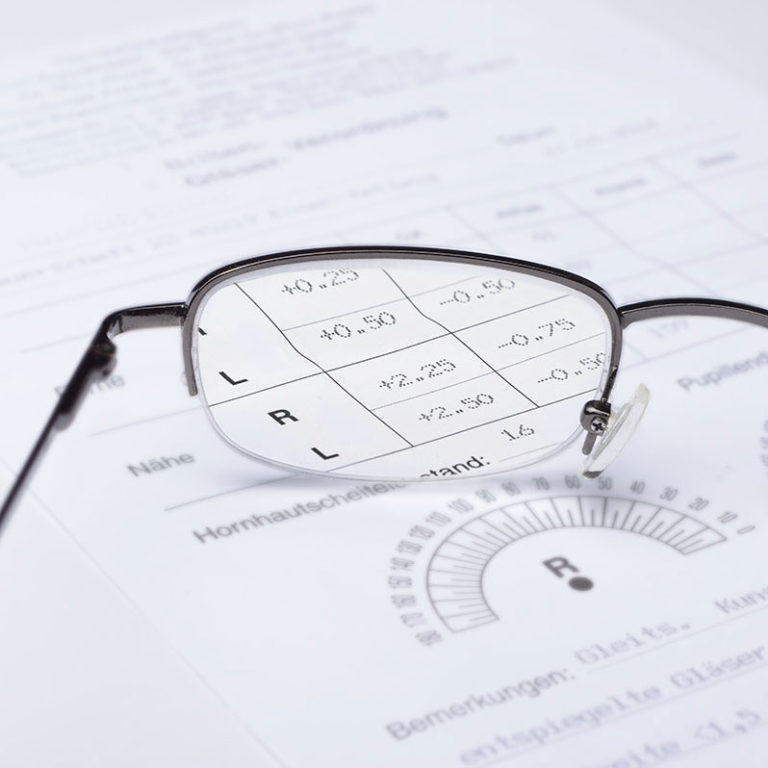If you suffer from certain eye problems, your doctor may prescribe eyeglasses to help with your eyesight. However, your prescription for eyeglasses contains numbers and abbreviated words that you may not be able to understand.
Therefore, the first step towards reading your eyeglass prescription is to understand the meaning of these abbreviations.
What your eyeglass prescription means
You’ll likely notice that your eyeglass prescription includes a list of numbers and abbreviated words you may have never seen before. Traditionally, the abbreviations used have been derived from Latin terms to describe information pertaining to your right and left eye.
Below is a list of the most common abbreviations found on eyeglass prescriptions to help explain what they mean.
OD, OS, OU
You are likely to see the abbreviated terms OD, OS and OU. OD refers to Oculus Dexter while OS represents Oculus Sinister. They are Latin words that mean right eye and left eye respectively. OU refers to Oculus Uterque. It stands for both eyes. These are the traditional abbreviations that doctors use when making prescriptions for eyeglasses. However, some eye doctors prefer to use modernized prescriptions. Re stands for right eye while E stands for the left eye.
SPH
The abbreviation SPH stands for Sphere. It describes the amount of lens measured in diopters that you need for good vision. The term means that the correction for your sight is spherical. If you are shortsighted, the number under the abbreviation will include a (-) sign. If you are longsighted, the number will consist of a (+) sign. If your prescription has the word Plano, PI, or an infinity sign, it means that you do not have distance problems. You may, however, have astigmatism. Most values will be 0.00 to +/-20.00.
Axis
Axis is the lens meridian that has no cylinder power to correct astigmatism. The axis number helps your eye care provider to know the direction in which they should position a cylindrical power in the lenses of your glass. The number may be between 1 to 180, where 90 represents the vertical position while 180 represents the horizontal position. The numbers only describe the position of astigmatism, they do not explain the strength of your prescription. The Axis can be present if there is a CYL value.
CYL
The abbreviation stands for Cylinder. It represents the amount of lens power you need for astigmatism. If you do not have astigmatism, you may not have anything indicated in this column. The value may be a plus or a minus, and in most cases, the value will be between +/-0.25 to +/-4.00.
ADD
Add stands for Addition. It stands for the additional correction that you need for reading. It is used in bifocal glasses, reading glasses, or varifocal glasses. It represents the additional power over the distance prescription. It only appears once in your prescription because the additional power is the same for both eyes. The value is typically between +0.50 to +3.50. If you only need your glasses to correct shortsightedness or long-sightedness and not for reading, you may not need this prescription.
A Prism
A prism corrects lay eyes. It may correct delicate conditions including particular eye disorders and conditions that need the image in focus to change its position. Such conditions include squints. It is measured in Prism Dioptre. They come with directions such as UP, DOWN, IN, and OUT. The value may go up to ten.
PD
PD stands for Pupillary Distance. It is the distance between the centers of your pupils. It is measured in millimeters. The measurement makes it possible to ensure that when you get your glasses, you are looking through the right spot in your lenses. It is possible to take this measurement on your own if your eye care provider does not provide it. The average number is 62mm for women and 64mm for men. It can, however, range between 58 and 68mm.
Dist./Inter/Near
Dist. stands for Distance and inter stands for Intermediate. Distance is the prescription that you need to correct your short or long sightedness. The glasses are suitable for all activities including walking around, running errands, and driving. Inter stands for intermediate. The prescription is for people who need to correct their intermediate vision. Near prescription glasses correct near sight. They are suitable for work that requires you to pay attention to detail.
BVD
BVD stands for Back Vertex Distance. It represents the distance from the back of the lens of your glasses to the apex of the cornea. It can be adjusted to change the power of the lens in relation to the eye. You need the measurements when changing prescriptions for your eyeglasses. It is important when the prescription goes beyond +/- 4.00D.
Your eyeglass prescription is different from your contact lens prescription
Remember that your eyeglass prescription does not apply to contact lenses. This is because the lens power is different between the two. Eyeglasses are positioned at a distance from the eyes, whereas contact lenses sit directly on the eyes. Therefore, it is important to use your eyeglass prescription to buy eyeglasses only.
If you are not sure about what your prescription means, do not be afraid to ask your eye doctor for help.

